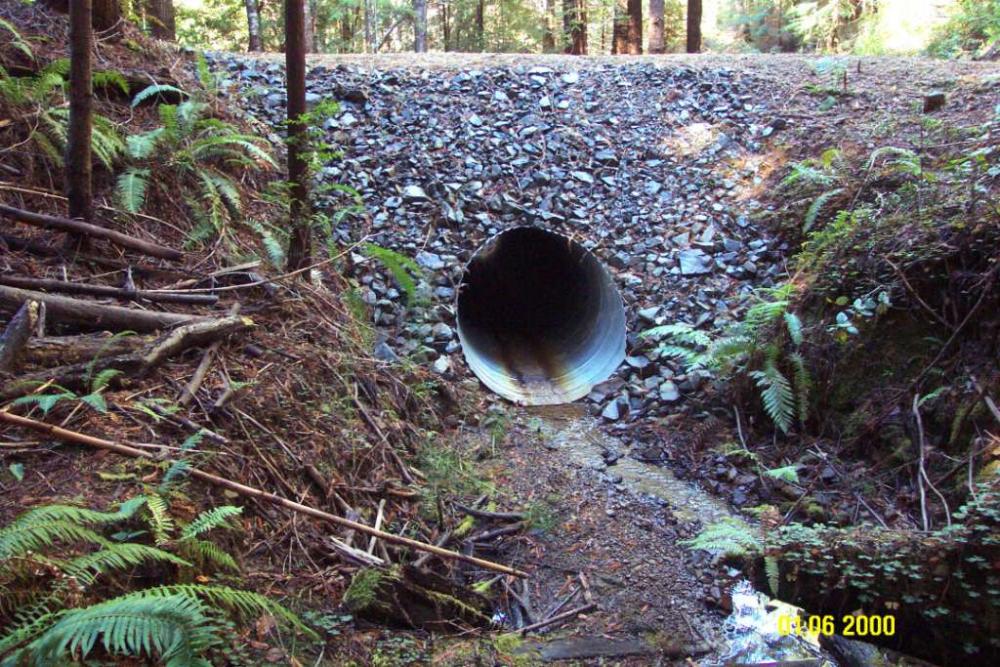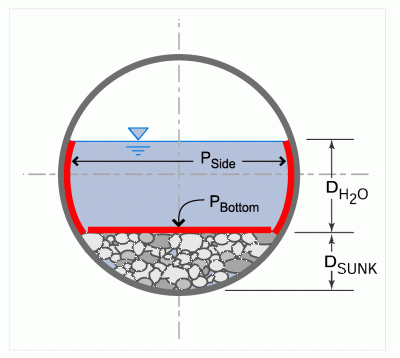Register now or log in to join your professional community.

Thank you my dear friend about your invitation ,,, I am agree with the answer of my brothers Jaffer , Hatem and Mohammad and I want to add ,,, That the culvert,bridge its a types of Crossings and there are three types of crossings: bridges, culverts, and fords. From a design standpoint, the defining feature of each is how it will perform during expected flows. A bridge allows passage over a body of water without the travel surface becoming subject to the forces of the moving water. For example, the heavy steel beams under an overpass are not particularly well anchored to prevent sideways movement because they’re only intended to handle the vertical loads of the traffic on top. Culverts allow flows to pass from one side to the other ranging from a trickle in the bottom of the pipe to both ends being fully submerged. In the most extreme rainfall or runoff events, the excess water that the culvert can’t carry might cross the roadbed itself. Fords allow the stream to flow over the road all the time without pipe, extra earth for an embankment, or any structure to be constructed or maintained. Vehicles simply cross through the shallow water and continue on their way. In many rural areas, the nature, severity, frequency, and impacts of a closed road make fords the most cost-effective way to deal with a short-term heavy runoff situation

Thanks,it is an opening through an embankment for conveyance of water by mean of pipe or an enclosed drain under road or rail way. Materials used are R.C.C ,corrugated metsl ,plastic or ston masonry. Shapes circular, box or arch section.

A culvert structure is used when the conveyance system must pass a certain road, railroad or simply another canal. the reasons we use an underpass structure can be:
1) the infrastructures that exist on our way are precious and need to be kept without a change.
2) the infrastructures that exist are in a sloped zone. So you use the culverts to underpass the rain water.
3) The conveyance system must certainly pass a junction with the roads and etc and if not, the construction cost or design criteria wont met.
Culverts' sections can be in three popular shapes, Full circle as a pipe, Rectangle and Semi-Circle as half a pipe. If the discharge flow is high, we can use more than one parallel culverts.



As far as the open hydraulic design criteria and formulas go, I must say that designing a rectangular culvert would be much more easier but you must never forget the possibility of overflowing in your culvert. It's always an important issue to see the worst cases, specially if your culvert intersects with a high road which the passing cars have higher speed than usual. My experience shows that if you dig enough that you have a free zone of100 cm difference between the crown of your culvert and the surface of your road, you'd better design a rectangular culvert. But if it is less than100 cm, design it as a pipe or semi circle; so that the water reaches the top grade of culvert only in the worst cases possible.
By the way, if you have a flow that contains a great deal of sediments or sand or small gravels always include it in your calculations.

Hope you find my answer useful. A vote up would be nice by the way :)

A culvert Bridge is a structure that allows water to flow under a road, railroad, trail, or the bridge.

it is a box section reinforced concrete frame structure connects between two structures

Culverts are a small, low cost installation that if designed incorrectly, can have significant impacts on the channel, the road, and the upstream landowners..


Architecturural engineering

A culvert structure is used when the conveyance system must pass a certain road, railroad or simply another canal. the reasons we use an underpass

A culvert is a structure constructed for the flow of water under a road surface.



